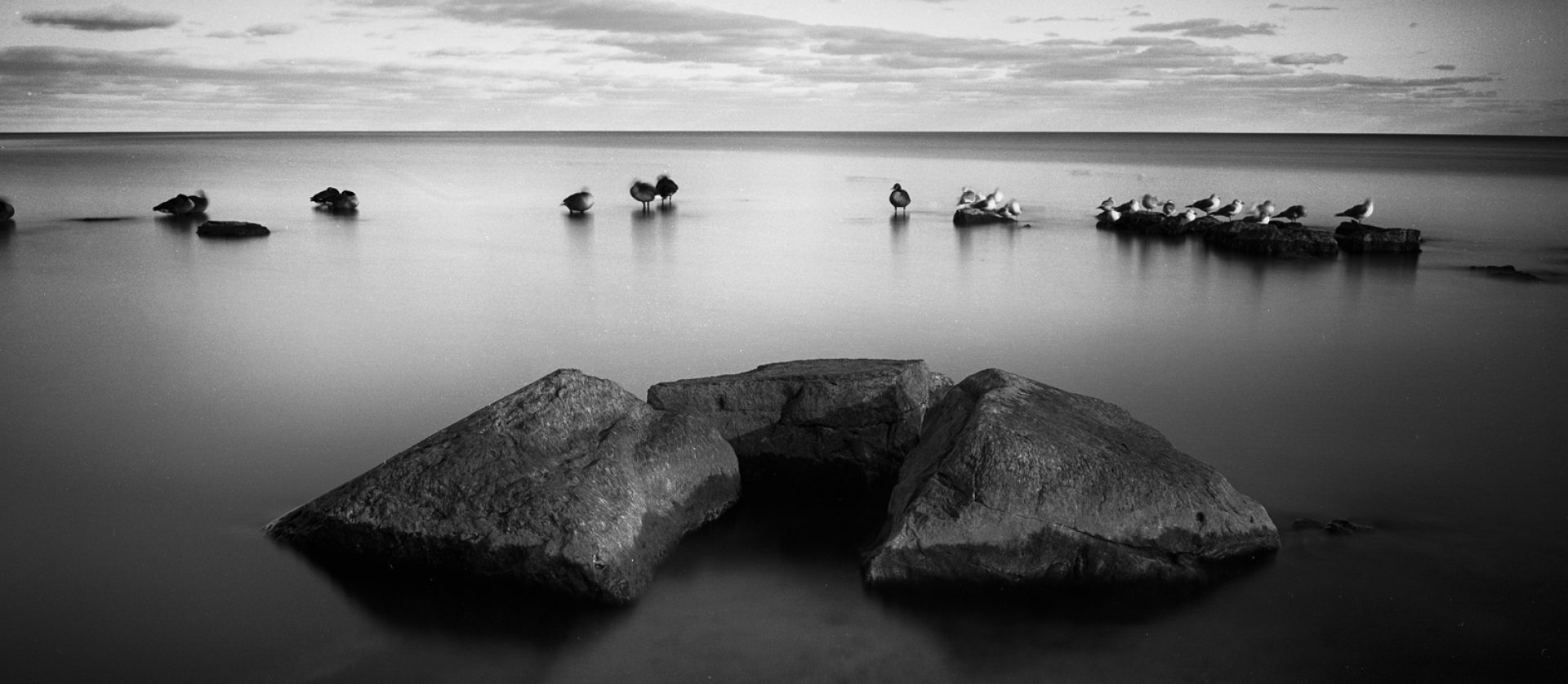There’s something deeply satisfying about loading a slow film into your camera — the deliberate pace, the precision of light measurement, and the patience required to let a scene unfold. On a recent shoot through Toronto’s vibrant Chinatown, I ran a roll of Adox HR-50 at box speed (ISO 50) through my Nikon F6. The film was purchased locally at Graination in Toronto, Canada, a shop that’s become a dependable source for niche emulsions, lab services and coffee for local film photographers.
After the shoot, I developed the roll in 510 Pyro, diluted 1 + 100 at 22°C for 8 min 30s. The combination delivered exactly what I hoped for — refined detail, smooth tonal gradation, and that warm pyro stain that gives film images their quiet depth.
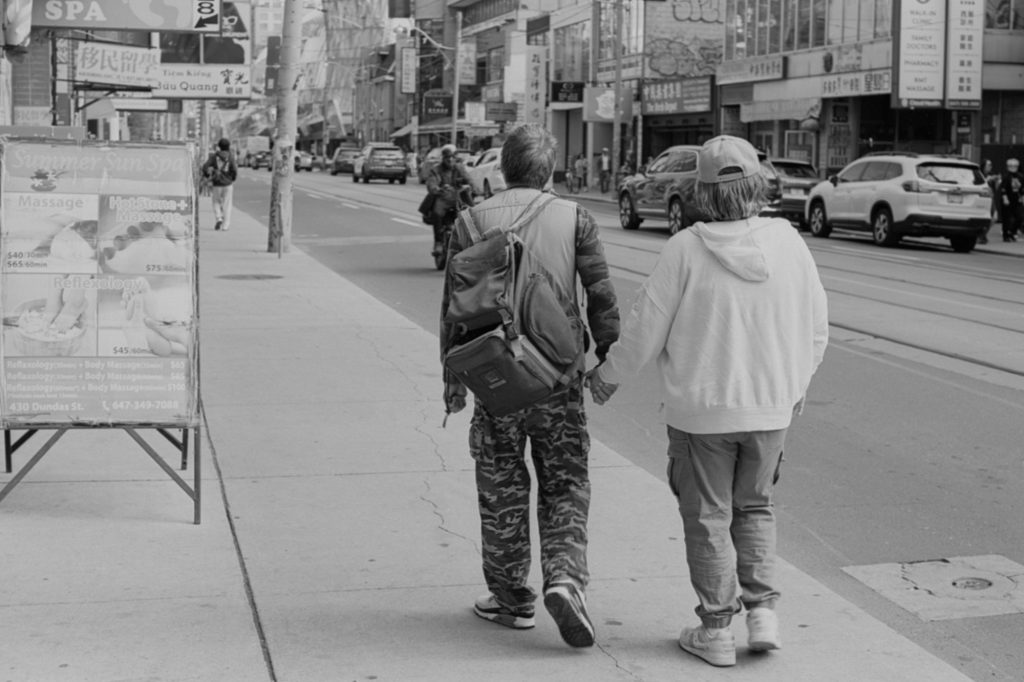
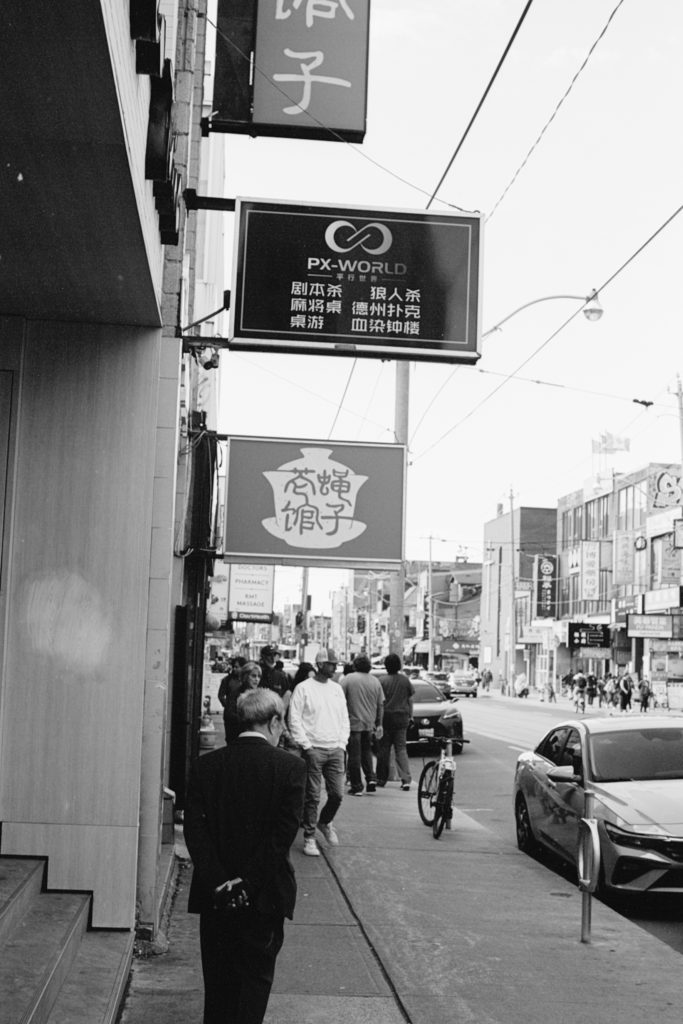
Why Adox HR-50?
Adox HR-50 is a specialty low-ISO emulsion, originally adapted from technical film used in aerial imaging. When treated correctly, it delivers staggering resolution and dynamic tonal separation. At ISO 50, it rewards careful metering and stability, which makes it an ideal film for deliberate, contemplative photography.
Walking through Chinatown, I was drawn to textures — ceramic tiles, painted brick, and glints of metallic signage. HR-50 translated the high-contrast light of a late Toronto morning into subtle gradients and structured highlights. There’s a quiet elegance to the negatives: every surface looks tangible.
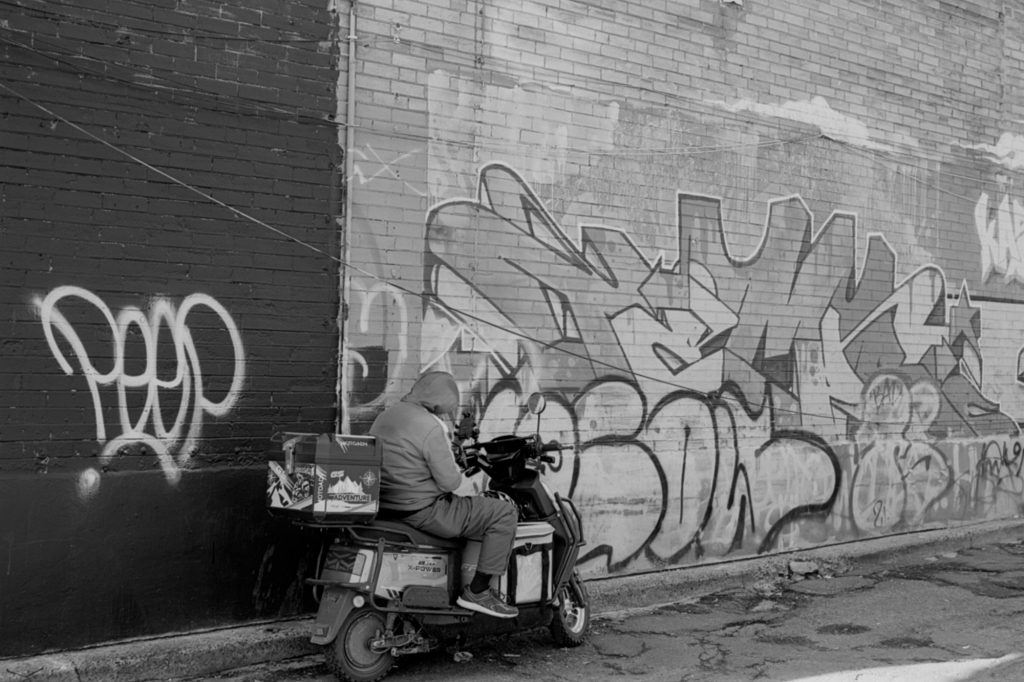
Shooting Low ISO Film — Lessons from the Street
Low-ISO films like HR-50, Rollei RPX 25, and Ilford Pan F 50 reward precision. Shooting ISO 50 means you can’t rush; every exposure must be measured.
Key considerations when shooting slow film:
- Meter for shadows: Always expose for the darkest important tones. HR-50’s shadows fall off quickly if underexposed.
- Stability matters: Even though the Nikon F6’s mirror damping is excellent, use a tripod or brace when possible — fine-grain films reveal micro-movement easily.
- Light awareness: ISO 50 slows you down to the rhythm of available light. In Chinatown, bright storefronts contrasted sharply with shaded alleys — perfect for testing HR-50’s tonal range.
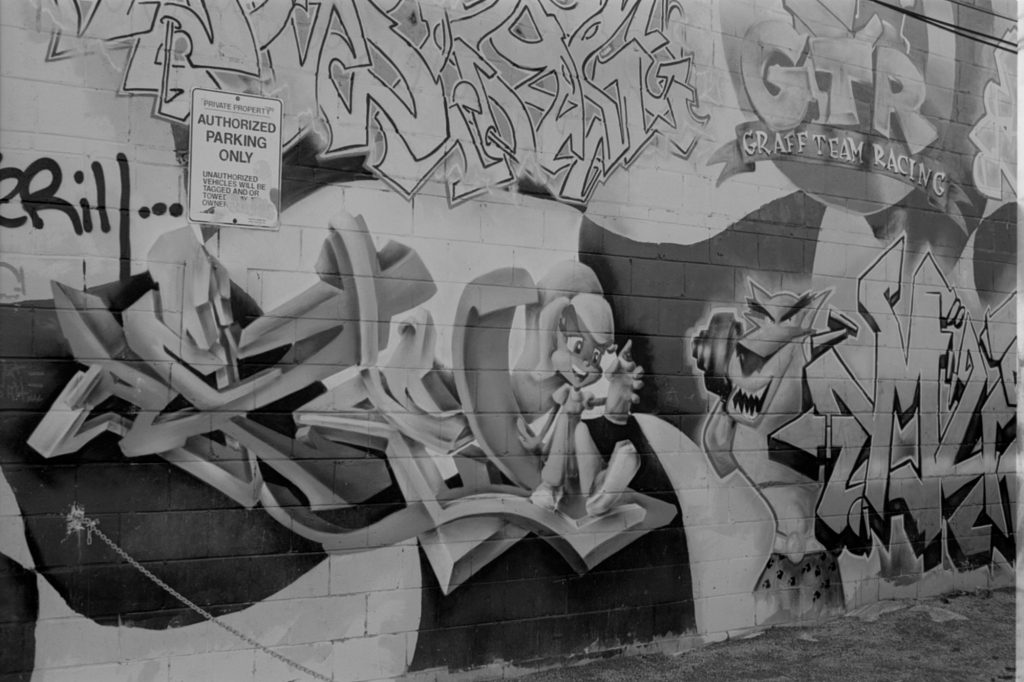
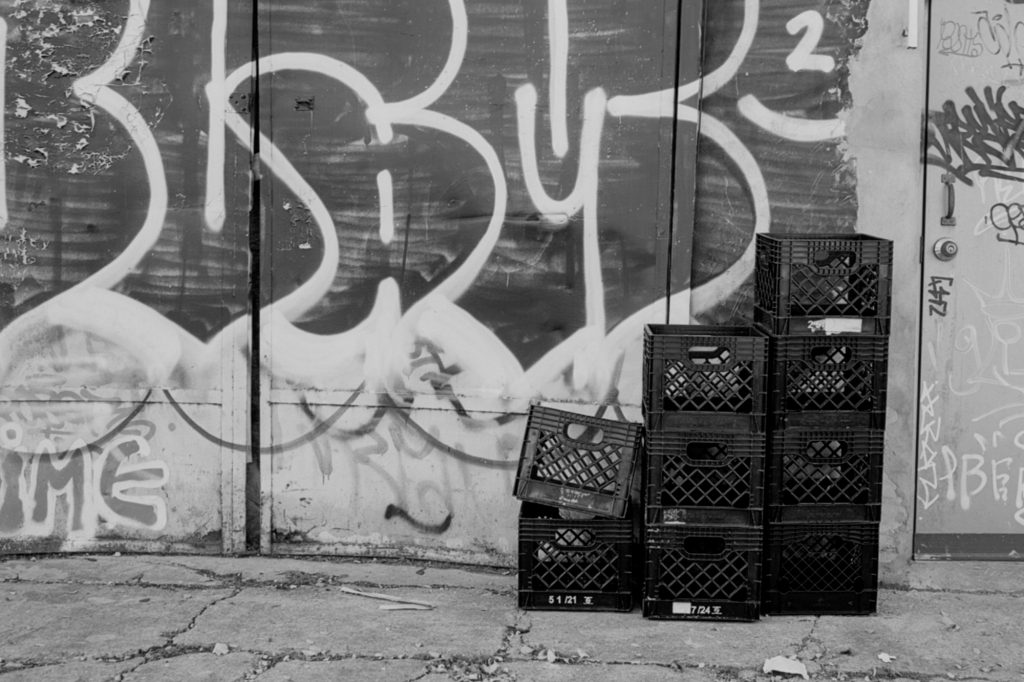
Developing Adox HR-50 in 510 Pyro (1 + 100, 22°C, 8 Minutes, 30 Seconds)
510 Pyro is a modern staining developer known for its ability to preserve highlight detail and deliver an organic tonal transition. On HR-50, it excels.
My process and results:
- Grain: Virtually invisible. Even on large scans, texture appears continuous.
- Acutance: Excellent. The pyro stain increases edge definition and “micro-contrast,” giving the negatives tactile clarity.
- Tonal separation: Midtones glow with a delicate, almost sculpted gradation — perfect for high-contrast city light.
- Contrast: Balanced. The 1+100 dilution keeps highlights clean and preserves shadow texture.
Workflow notes:
- Agitate gently — 60 seconds initially, then slow inversions each minute for 10 seconds.
- Water stop bath – I don’t use traditional acidic stop bath with Pyro developers
- Fix completely and wash thoroughly to protect the stain.
- When scanning, the warm brown stain will shift the tone slightly; Sometimes you can chose to retain that warmth for a natural, analog feel. However, I typically scan in monochrome only.
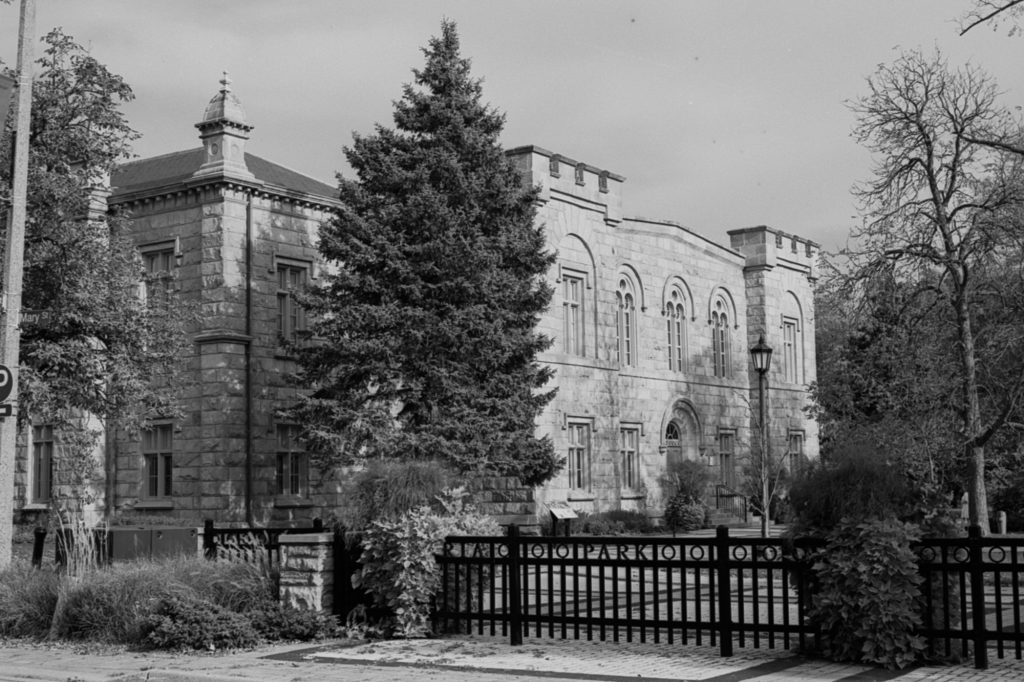

Developer Comparisons — Adox HR-Dev, FX-39 II, and Others
Adox designed HR-Dev specifically for HR-50 and other fine-grain, high-resolution films. It produces clean, linear tonal response and minimal grain, ideal when you want a more neutral, technical look.
Their FX-39 II is another excellent choice — a modern reworking of Geoffrey Crawley’s classic formula. It balances acutance and fine grain, yielding a crisp but natural tonal scale. FX-39 II is especially well-suited to HR-50 for those who want slightly more contrast and brilliance than HR-Dev provides.
In my case, I had originally planned to use FX-39 II for this roll, but my supply had oxidized — the developer had darkened and lost potency. Oxidation is a common issue once the bottle is opened, especially if there’s significant air space. Since I didn’t have a fresh batch on hand, I turned to 510 Pyro, which is far more stable and keeps well over time due to its syrupy concentration. The substitution turned out to be serendipitous — 510 Pyro revealed an entirely different side of HR-50’s tonal range.
| Developer | Strengths | Trade-Offs |
|---|---|---|
| Adox HR-Dev | Clean, low-contrast, neutral tonality | Slightly less micro-contrast and character |
| Adox FX-39 II | Excellent acutance and brilliance; designed for modern fine-grain films | Sensitive to oxidation; shorter shelf life once opened |
| 510 Pyro / Pyrocat-HD | Superb tonal depth, smooth midtones, archival stain | Requires careful agitation and full wash cycle |
| Kodak Xtol | Fine grain, great for scanning, rich shadows | Lower edge sharpness |
| Ilford ID-11 / Kodak D-76 | Reliable, forgiving, familiar look | Less distinct in tonal character |
| Rodinal (Adonal) | High acutance, snappy contrast | Grainier, especially in uniform tones |
| HC-110 | Flexible and easy to use | Slightly coarser grain and flatter midtones |
Pushing and Pulling to ISO 50
Though HR-50 performs beautifully at box speed, slow films can be adapted creatively through push or pull processing.
Pushing examples:
- Rollei RPX 25 pushed to ISO 50 yields slightly denser contrast and more pronounced grain — great for structural detail and architecture.
- HR-50 pushed to ISO 100 delivers extra contrast while maintaining fine grain, especially in pyro developers that moderate highlights.
Pulling examples:
- HR-50 at ISO 25 enhances shadow separation and softens contrast — perfect for harsh midday light or architectural work.
- Reduce development time by roughly 10–15% to maintain highlight control.
Pyro developers handle both pushing and pulling gracefully. The stain acts as a compensating factor, retaining tonal smoothness even when contrast shifts.

The Mindset of Low-ISO Photography
Shooting ISO 50 film changes your tempo. It invites you to slow down, study light, and commit to each frame. The Nikon F6 makes this process almost effortless — its metering precision and dependable mechanics allow you to concentrate on composition and exposure without worrying about error.
My Chinatown walk was a reminder of how film photography becomes a form of mindfulness when slowed to its essentials. HR-50’s quiet detail and 510 Pyro’s luminous tonality captured that rhythm perfectly.
Final Thoughts
Adox HR-50 in 510 Pyro offers extraordinary fidelity and character — a combination that renders urban light with grace and realism. While HR-Dev and FX-39 II remain excellent and officially recommended pairings, the 510 Pyro experiment opened new possibilities for tonal depth and longevity.
If you’re in Toronto, stop by Graination for a few rolls of HR-50 and a coffee. Then head to Chinatown, where light, color, and texture converge into a visual playground made for slow film photography. Take your time — ISO 50 demands it, and rewards it.
